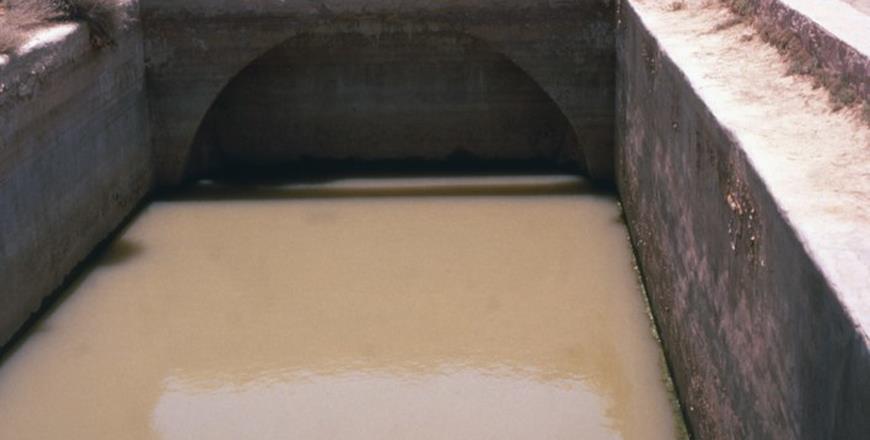Roman Legacy In Jordan: Analysing Historical Phases Of Hawara Fort
The Roman fort at Ḥawara, modern Ḥumayma, was established soon after the conquest of the Nabataean Kingdom and the establishment of the Provincia Arabia. Hawara is located in the southern Jordan, between Petra and Wadi Rum.
According to the Canadian scholar, John Oleson, the initial phase of the Roman military camp was constructed between 111 AD and 116 AD.
This complex, consisting of the military installation, water reservoirs, commander's residence and remains of churches and mosques testifies about continuous occupation of the site. It hosted an auxiliary unit, probably a quingenary ala,
detached from one or more of the legions stationed in the region after the conquest.
"A 3rd century inscription found in a shrine in the associated civilian settlement mentions the Legio III Cyrenaica, but units from the Legio VI Ferrata may also have cycled through the fort," Oleson said. The walls, one gate, and many of the internal structures were excavated by Oleson between 1993 and 2005.
According to Oleson, Hawara had seven phases.
"The phase I –Pre-Roman Nabataean ceramics, without any known structural remains [1st century AD]; Phase II buildings, and water-supply system, with subsequent piecemeal alterations [ca. 106-110 AD to ca. 285AD]. Construction of military bath in the vicus; Phase III- Possible abandonment of the fort, either as a result of destruction by Zenobia's army in 270 AD or as part of Diocletian's reorganisation of the frontier in the 290's [late third to early fourth century]; Phase IV- Renovation or reoccupation of portions of the fort [ca. 320 AD to 360 AD], including units of Equites sagittarii indigenae. Ends with destruction by earthquake of 363 AD or events associated with the revolt of Queen Mavia in 375-378 AD; Phase V- Renovation of portions of the fort for military and civilian occupation, and dumping of debris in many abandoned rooms [ca. 363AD to early 5th century]; Phase VI-Abandonment of the fort [early fifth century], removal of building materials, and gradual burial of the walls by wind and water-born soil [5th to 8th century]; Phase VIA: Small-scale, temporary occupation of Area L [mid-6th century], " Oleson explained.
The Roman bath southwest of the fort was built on top of a Nabataean structure as well as a shrine. In the initial stages, the Romans built the fortification and all the interior buildings, as well as internal waters supply and canalisation.
"Assuming some coordination with the completion of the Via Nova Traiana, these projects were probably finished by at least the first six years after the conquest in 106 AD. There were subsequent minor, piecemeal alterations and renovations
to some of the interior structures of the fort during the 2nd and 3rd century, but the
main structures within the walls were complete in the early 2nd d century," Oleson elaborated, adding that several strikingly luxurious features in the praetorium suggest the participation of Nabataean workmen.
Stylistic details show that the mosaic floor in the commander's suite of the praetorium was laid by the same school of Nabataean mosaicists.
The Roman bath at the commander's quarter had a hypocaust heating system (an ancient Roman heating system, comprising a hollow space under the floor of a building, into which hot air was directed) very similar in design to that in the remarkable Nabataean or early Roman bath in a spectacular location on the Jabal Al Khubthah above Petra.
"There was a similar heated room in the small fort at Khirbat Al Khalidi, 33 kilometres south of Ḥawara. The luxurious House EZ IV at az-Zanṭur in Petra, which belongs to approximately the same period as the praetorium, also had a winter triclinium with hypocaust heating," Oleson underlined.
According to the scholar, a Nabataean or early Roman period house at Khirbat adh-Dhariḥ has two similar hypocaust rooms, one of which may have been associated with a bath.
Petra supplied most of the pottery used by both soldiers and civilians at Ḥawara throughout its history, so other types of relations are natural, Oleson concluded.

Legal Disclaimer:
MENAFN provides the
information “as is” without warranty of any kind. We do not accept
any responsibility or liability for the accuracy, content, images,
videos, licenses, completeness, legality, or reliability of the information
contained in this article. If you have any complaints or copyright
issues related to this article, kindly contact the provider above.
Most popular stories
Market Research

- Japan Well Intervention Market Size To Reach USD 776.0 Million By 2033 CAGR Of 4.50%
- Japan Shrimp Market Predicted To Hit USD 7.8 Billion By 2033 CAGR: 2.62%
- Ion Exchange Resins Market Size, Industry Trends, Key Players, Opportunity And Forecast 2025-2033
- Nutraceuticals Market Size Projected To Witness Strong Growth During 2025-2033
- UK Cosmetics And Personal Care Market To Reach USD 23.2 Billion By 2033
- Primexbt Launches Empowering Traders To Succeed Campaign, Leading A New Era Of Trading






















Comments
No comment